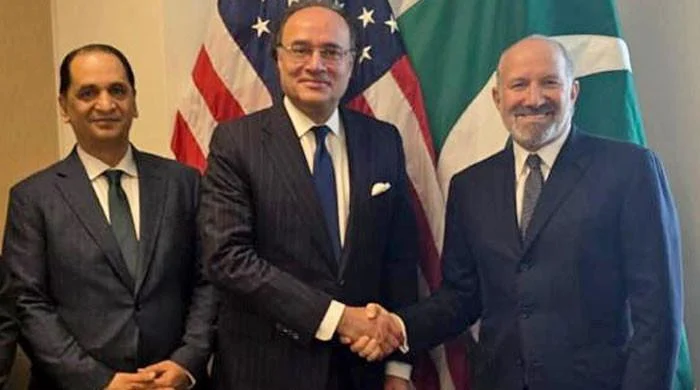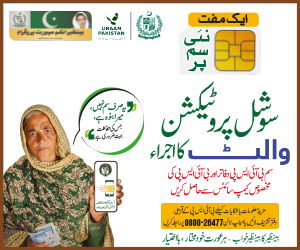Trump Announces U.S.–Pakistan Oil Partnership; Says Pakistan May Export Oil to India One Day
Trump said as india is currently facing pressure from the US over its energy imports from Russia.
ISLAMABAD – Pakistan and United States moved ahead with deal to jointly develop Pakistan’s massive oil reserves, marking a new chapter in their economic relationship.
US President Donald Trump announced the agreement, revealing that an American oil company will soon be selected to lead the partnership. “We are in the process of choosing the Oil Company that will lead this Partnership,” Trump said, hinting at the potential for the collaboration to expand in exciting ways.
This energy-focused deal not only aims to tap into Pakistan’s vast untapped oil resources but also signals a strategic move that could impact regional energy dynamics.
“Who knows — in the future, Pakistan might even be selling oil to neighboring India”
Trump said as india is currently facing pressure from the US over its energy imports from Russia.
The agreement was finalised after high-level talks between Pakistani Finance Minister Muhammad Aurangzeb and US trade officials, seeks to boost bilateral trade, reduce tariffs, and attract significant US investment into Pakistan’s energy and infrastructure sectors.
Officials from both countries view the deal as a stepping stone toward deeper cooperation in energy, minerals, technology, and emerging markets like cryptocurrency.
In the vibrant corridors of global diplomacy, a dramatic chapter unfolded as former U.S. President Donald Trump took aim at both India and Russia, branding their economies as “dead” in a blistering post on his social media platform, Truth Social. He warned that both nations were doomed to drown together in economic collapse. “I don’t care what India does with Russia,” he wrote. “Let their dead economies go down together. I don’t care.”
He further criticized India’s tariffs, asserting that their high trade barriers hurt American businesses, and pointed out that U.S.–Russia trade relations were minimal—or nearly nonexistent—and that this status quo should continue.
At the same time, Trump spotlighted a fresh diplomatic milestone: the announcement of a finalized trade agreement between the United States and Pakistan. “We have just concluded a Deal with the Country of Pakistan, whereby Pakistan and the United States will work together on developing their massive Oil Reserves,” he declared. “We are in the process of choosing the Oil Company that will lead this Partnership.”
Pakistan’s Finance Minister, Senator Muhammad Aurangzeb, confirmed that key discussions had taken place with U.S. Trade Representative and Commerce Secretary, with significant support from Pakistan’s Ambassador to the U.S., Rizwan Saeed Sheikh, and Commerce Secretary Jawad Paul. “The purpose of the deal is to boost bilateral trade, improve market access, attract investment, and strengthen cooperation in areas of mutual interest,” the official statement explained.
According to the official statement, tariffs would be reduced—particularly for Pakistani exports to the U.S.—launching a “fresh start in economic cooperation between the two countries.” Energy, minerals, information technology, cryptocurrency, and other key sectors were set to become focal points of the emerging partnership. Pakistani officials saw this agreement as a turning point in economic diplomacy.
Finance Minister Aurangzeb, speaking to Geo News, described the meeting in Washington with U.S. officials as “very constructive,” saying they had finalized the deal. “This deal reflects a broader economic and strategic partnership that’s now taking shape,” he said, emphasizing the private sector’s role in supporting the drive to reduce Pakistan’s trade imbalance with the U.S.
Deputy Prime Minister and Foreign Minister Ishaq Dar confirmed late at night via a post on X (formerly Twitter), proclaiming: “Pakistan concludes deal with USA, AlhamdoLilah.” He revealed that top-level talks had involved Secretary of State Marco Rubio and emphasized the importance of expanding collaboration in critical minerals and mining. “Our teams have been here in Washington discussing, having virtual meetings, and a committee has been tasked by the prime minister to fine‑tune now,” he added.
Trump, in the same statement, said that Washington was still negotiating with India, even as he announced the U.S. would impose a 25% tariff on goods imported from India starting Friday. He justified the measure by citing India’s steep tariffs, its energy deals with Russia, and India’s growing influence within the BRICS group.
At the White House, Trump told reporters: “They have one of the highest tariffs in the world now—they’re willing to cut it very substantially. We’re talking to India now—we’ll see what happens… You’ll know by the end of this week.” The looming tariff threatened key Indian export sectors like textiles, footwear, and furniture, making them far less competitive compared to rivals from Vietnam and China.
The tariff India faced—25%—was significantly higher than those recently imposed on Vietnam (20%), Indonesia (19%), Japan, and the EU (both 15%). Experts warned it would deal a harsh blow to Indian exporters. SC Ralhan, president of the Federation of Indian Export Organisations, said the move could cripple competitiveness.
Trump also suggested an additional 10% tariff on any country aligning with “anti‑American policies” of the BRICS, further escalating tensions. His announcement came just days before a deadline for reciprocal tariff agreements or mandatory Trump‑imposed tariffs. The new U.S. tax on Indian imports could rupture months of talks and undermine a strategic partner of Washington in Asia.
In Pakistan, the mood was celebratory. The new trade agreement was hailed as a breakthrough: it promised tariff reductions, stronger investment ties, and expanded cooperation in strategic sectors. Pakistani officials expressed hope that it would not only improve trade balance but also attract U.S. capital into infrastructure, energy, minerals, IT, and even cryptocurrency projects.
Pakistan concludes deal with USA, AlhamdoLilah. pic.twitter.com/N3CXyQdIXd
— Ishaq Dar (@MIshaqDar50) July 31, 2025
The deal was also perceived as U.S. recognition of Pakistan’s pivotal role in regional diplomacy—particularly in easing tensions with India. Pakistani officials credited both Trump and Marco Rubio for facilitating the ceasefire between Pakistan and India in May—a claim hotly disputed by India, which insists bilateral issues must be resolved directly.
The background to that ceasefire: on April 22, a militant attack in Indian-administered Jammu & Kashmir (IIOJK) claimed lives, which India blamed on Pakistan. Islamabad denied involvement. After India struck back on May 7, the two countries clashed until a ceasefire was announced on May 10. Trump later claimed credit on social media, though India rejected the notion that its actions were externally driven.
As the world watched, two contrasting narratives emerged: India and Russia, described as “dead economies” and subject to U.S. trade pressure—while Pakistan, by contrast, was celebrated in an emerging economic alliance. Trump’s aggressive rhetoric toward India and Russia underscored his transactional approach, whereas the U.S.–Pakistan accord centered on investment, shared energy development, and strategic cooperation.
It remains to be seen how these developments play out. Will the U.S.–Pakistan oil‑and‑trade alliance translate into tangible projects and investment flow? Will reductions in tariffs lead to sustained export gains for Pakistan? How will India respond—not only to U.S. tariffs but to overtures about energy ties with Russia? And what of Russia’s sidelined position in Trump’s narrative—will it lose further ground in global commerce?
For Pakistan, the timing could hardly be better: with fiscal pressures mounting and a trade deficit to bridge, a deepened relationship with the U.S.—if managed effectively—might open new avenues in infrastructure, energy, technology, and beyond.
Trump’s blunt denouncement of India and Russia as “dead economies” served as a rhetorical flourish—intended to dramatize U.S. leverage while aligning attention elsewhere. At the same time, his embrace of Pakistan in a strategic trade deal signals a calculated pivot—one that may reshape regional alignments if carried through.
Time will tell whether this alliance sparks enduring economic ties or remains a high‑profile announcement with limited follow‑through. The developments have already stirred debate—some viewing Pakistan’s positioning as a diplomatic coup, others questioning whether the rhetoric masks deeper imbalances or geopolitical strings.
Meanwhile, India faces a critical choice: negotiate tariff cuts and potentially reduce reliance on Russian energy, or brace for prolonged trade friction and the consequences of high levies. Russia—caught between global isolation and its alliance with India—must weigh whether to seek new trade partners or risk being sidelined further.
In a world where trade tensions, tariffs, and great‑power rivalries define headlines, the U.S.‑Pakistan breakthrough offers a counter‑narrative: one of strategic alignment, economic integration, and forward-looking partnership. Whether it flourishes or falters may depend on follow‑through—and whether both sides can convert signed agreements into real investment, jobs, and prosperity.
Read more: Trump Imposes 25% Tariff on All Imports from India Over ‘Unfair Trade’
As the partnership takes shape, eyes will be on the chosen US oil company to lead this venture, setting the stage for what could become a game-changer in South Asia’s energy landscape.






Comments are closed, but trackbacks and pingbacks are open.